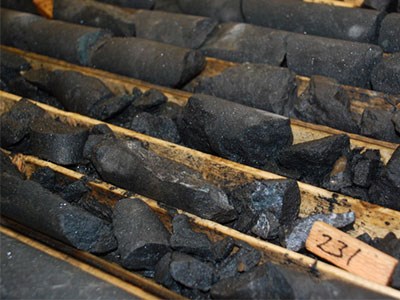No sense getting into the chromite business without having China on your radar, according to KWG Resources.
With more than half of the world’s ferrochrome is being consumed by the People’s Republic, Moe Lavigne, vice-president of exploration and development for the Toronto junior miner, said it’s a no-brainer that his exploration firm would strike a deal with a Chinese railroad engineering outfit to investigate the economics of a Ring of Fire railroad.
KWG announced on Nov. 24 a three-year agreement with China Railway First Survey and Design Institute to conduct, what amounts to, a pre-feasibility study of KWG’s long-standing plans for an ore-haul railway from northwestern Ontario to the James Bay region to haul out chromite for processing.
The company claim-staked a 340-kilometre long route running from the CN main line into the mineral belt and to KWG’s Big Daddy chromite deposit, of which it owns a 30 per cent share with Noront Resources.
Talks with Chinese interests about chromite off-take agreements is a discussion that KWG has been having for “many years” without gaining much traction until about two months ago, said Lavigne.
The Chinese government wants its state-owned railway engineering companies to do more international work.
“One of our contacts in China called us,” said Lavigne. “That’s what precipitated this.”
With no interest from Canada’s major railways on financing and constructing a Ring of Fire line, KWG hopes they’ve opened a door to eventually secure capital from Beijing.
In return, they would guarantee the globe’s biggest economy a 100-year supply from the world’s largest chromite reserve to feed their stainless steel industry.
“They’re aware this is the way they might have to go,” said Lavigne. “This is the first step in getting there.”
The agreement was announced Nov. 24, but for the past month China Railway has been leafing through KWG’s accumulated technical data on their proposed railway, dating back to a 2010 study prepared by Krech Ojard, a respected Minnesota railway engineering firm.
Lavigne explained it’s only a preliminary first step by the Chinese toward considering a full-blown feasibility study. “They’re going to create a proposal for building this railroad.”
But KWG’s exclusive hold on that right-of-way remains tenuous.
The independent-minded junior miner has been a thorn in the side of the Ontario government.
Back in 2010, the company took a novel approach in using mining claims to stake a coveted north-south route atop a series of sand ridges with the idea of setting it aside for a future railroad.
The legality of using mining claims to secure surface rights for a railroad has been the subject of an ongoing legal fight involving Queen’s Park, Cliffs Natural Resources – who’ve since departed Ontario – and now Noront Resources, KWG’s partner on the Big Daddy project who acquired Cliffs’ chromite properties last spring.
KWG representatives appeared in an Ontario Court of Appeal in Toronto on Nov. 25 to petition for the right to appeal a court ruling that went against the company last July.
An Ontario Superior Court judge reversed an earlier 2013 provincial mining tribunal’s ruling denying Cliffs an easement to build an access road to its chromite properties atop KWG’s claims. The judge ruled Cliffs’ activities would not interfere with KWG.
Lavigne said the uncanny timing of the China Railway agreement on Nov. 24– a day before KWG’s court appearance – is a “total coincidence.”
He attributed it to a month-long delay in finalizing arrangements with Golden Share Mining Corp., a Chinese intermediary, which is connected to the Beijing Institute of Geology.
“I don’t think the Chinese care who ends up being the owner of the railroad. They just want to build it.”
KWG is a proponent of the Ontario Northland Railway being the operator.
How KWG’s Chinese agreement fits into the province’s murky Far North infrastructure planning picture is unclear.
The province has at least five commissioned Ring of Fire studies either completed or underway examining transportation options and community road costs, among other issues.
The Queen’s Park Liberals are also waiting on their newly elected federal Liberal counterparts to provide matching $1 billion for mining-related infrastructure in the Ring.
And earlier this year, the feds and province dropped $785,000 for the four most western First Nation communities closest to the Ring to study the impact of an east-west road that would benefit Noront Resources’ nickel project.
But shut out of the picture, Lavigne contends, is Marten Falls and Aroland, the two communities KWG has been primarily consulting with on the north-south route.
How Ottawa reacts to the possibility of a foreign government investing in infrastructure for a natural resource, deemed a national strategic asset, is uncertain as well.
“I think what it’s going to do is stimulate the provincial and federal government into action,” said Lavigne. “If you want to have a successful chromite industry in Canada, China has to be a customer.”
Lavigne said it’s time Ottawa steps up and shows leadership in driving an infrastructure plan forward.
“I have no confidence that the provincial government is really motivated to make this happen. And the reason is that they’re conflicted because they’ve sold that part of the province to the green movement (with the passage of the Far North Act in 2010). They don’t want to be seen building roads in an area they promised to make a park.”




